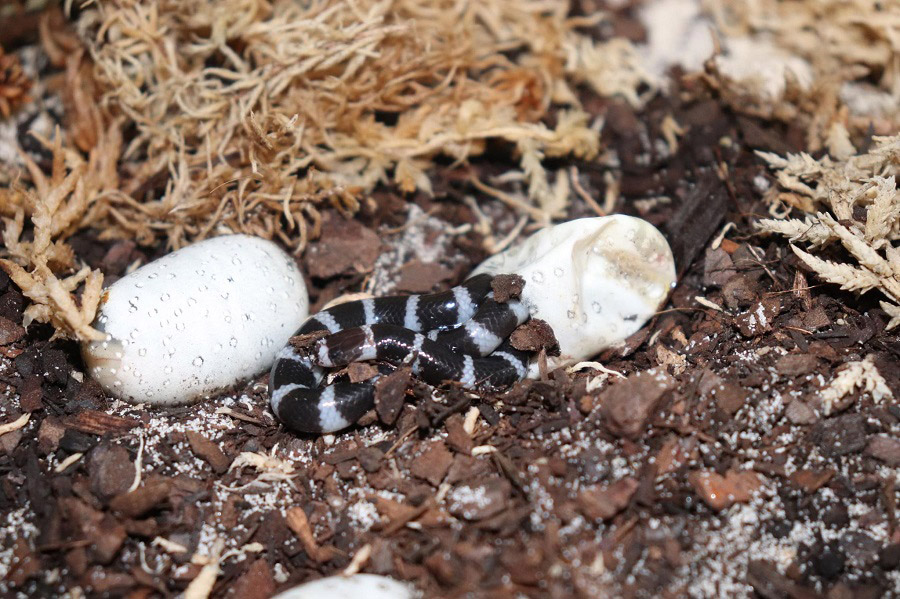Live birth vs eggs – what do snakes do?
The short answer is, both!
What is a viviparous snake?
Essentially this means to give birth to live young. An embryo develops within the mother with the young receiving nutrients directly from the parent. There are viviparous examples from fish, amphibians, reptiles, and mammals.

Juvenile red-bellied black snake
Examples of viviparous snakes of South East Queensland are:
Red-bellied black snake (Pseudechis porphyriacus)
Small-eyed snake (Cryptophis nigrescens)
Marsh snake (Hemiaspis signata)
Stephens banded snake (Hoplocephalus stephensii)
Pale-headed snake (Holocephalus bitorquatus)
Common death adder (Acanthophis antarcticus)
Tiger snake (Notechis scutatus)
Grey snake (Hemiaspis damelii)
Carpentaria snake (Cryptophis boschmai)
Rough-scaled snake (Tropidechis carinatus)
Viviparous reproduction must occur between sexual reproduction and internal fertilization as this is where the eggs are developed. For snakes, this is through one of their two penises, otherwise named the hemipenes.

Neonate rough-scaled snake born through live birth
What is oviparity?
Most snakes (approx. 70%) are oviparous, which means they lay eggs. Eggs can be placed in natural cavities such as hollow stumps or small mammals’ burrows. Most female snakes then abandon the eggs, except many python species. In pythons, the female will coil around the eggs to regulate the temperature, not feeding until the eggs hatch and the young disperse.
Examples of oviparous snakes of South East Queensland are:

Two neonate coastal carpet pythons
Eastern brown snake (Pseudonaja textilis)
Coastal carpet python (Morelia spilota sub sp. Mcdowelli)
Common tree snake (Dendrelaphis punctulate)
Yellow-faced whip snake (Demansia psammophis)
White-crowned snake (Cacophis harriettae)
Brown tree snake (Boiga irregularis)
Keelback (Tropidonophis mairii)
Golden-crowned snake (Cacophis squamulosus)
Red-naped snake (Furina diadema)
Spotted python (Antaresia maculosa)
Blind snake (Ramphotyphlops Sp)
Bandy bandy (Vermicella annulate)
Australian coral snake (Brachyurophis australis)
Coastal taipan (Oxyuranus scutellatus)
Lesser black whip snake (Demansia vestigiata)
Spotted black snake (Pseudechis guttatus)
Dwarf-crowned snake (Cacophis krefftii)

A fresh bandy bandy starting to come out of it’s shell

A neonate bandy bandy
Learn more about snake behaviour here
Find a local snake catcher here


